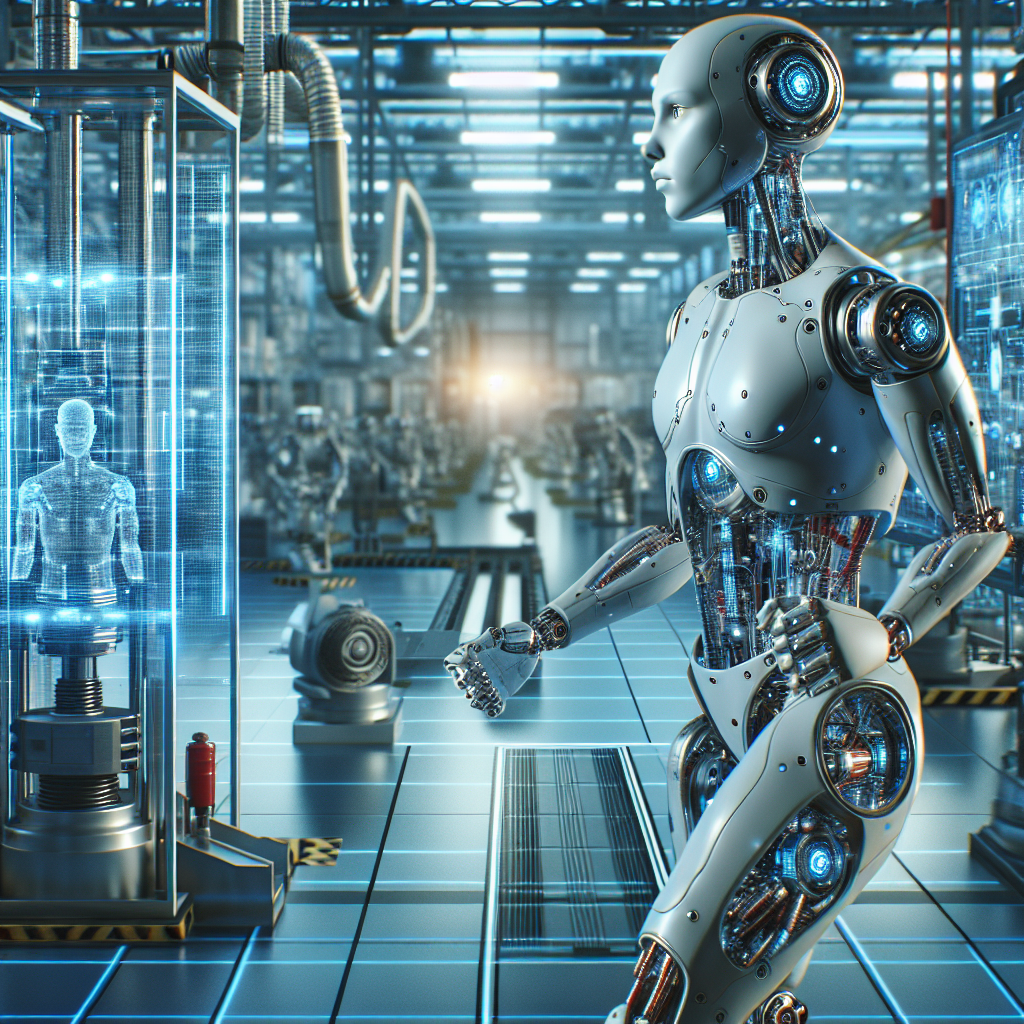
## Introduction
The field of humanoid robotics is progressing at an unprecedented pace, driven by advancements in artificial intelligence, material science, sensor technology, and power systems. These innovations are pushing the boundaries of what humanoid robots can achieve, making them more agile, intelligent, and applicable across various industries. In this post, we explore the latest cutting-edge research, emerging industrial applications, and potential future trends in humanoid robotics.
## Cutting-Edge Research
### Advancements in AI and Machine Learning
**Deep Reinforcement Learning**
One of the pivotal developments in humanoid robotics is the application of **deep reinforcement learning (DRL)**. DRL algorithms allow humanoid robots to learn complex tasks and adapt to new environments through trial and error. Google’s DeepMind has been at the forefront, utilizing DRL to enable humanoid robots to perform intricate movements with real-time adjustments.
**Generative Pre-trained Transformers (GPT)**
The utilization of large language models, such as OpenAI’s GPT series, in humanoid robotics allows for improved natural language processing. This enhances human-robot interaction by enabling robots to understand nuanced commands and engage in more sophisticated dialogues.
### Hardware Innovations
**Advanced Actuators and Sensors**
Research institutions like the Massachusetts Institute of Technology (MIT) are developing cutting-edge actuators made from variable stiffness materials, which enable humanoid robots to have human-like dexterity and fluidity in motion. Furthermore, the integration of LIDAR and advanced vision sensors contributes to improved spatial awareness and interaction with dynamic environments.
**Biometric Feedback Systems**
Recent advancements include implementing biometric feedback systems, allowing humanoid robots to sense and respond to human emotions. Companies like SoftBank Robotics are exploring these capabilities to enhance their robots’ effectiveness in caregiving and therapeutic settings.
## Industrial Applications
### Healthcare and Rehabilitation
Humanoid robots are making significant inroads into healthcare, particularly in patient rehabilitation. Companies like Toyota have developed robots that assist patients with mobility exercises, leveraging **biofeedback systems** to monitor progress and adapt therapies to individual needs.
### Manufacturing and Logistics
In the realm of manufacturing, humanoid robots like Boston Dynamics’ Atlas are revolutionizing assembly lines. These robots utilize computer vision and DRL to perform tasks such as material handling and precision assembly, significantly enhancing efficiency and productivity.
### Consumer Assistance
The hospitality industry is also witnessing a surge in humanoid robot deployment. Robots like Pepper are being used in customer-facing roles to provide information and services in retail and restaurant environments. These robots employ NLP capabilities for seamless interaction with customers, improving service delivery.
## Future Trends
### Adoption of Edge Computing
With the rise of edge computing, humanoid robots are expected to process data with less latency and increased efficiency. Edge computing allows for real-time data processing close to the robot without reliance on cloud-based systems, essential for applications requiring immediate responses, such as autonomous navigation in unpredictable environments.
### Ethical and Social Implications
As humanoid robots become more prevalent, ethical considerations regarding their use in sensitive roles, such as caregiving and surveillance, will come to the forefront. A collaborative approach involving ethicists, technologists, and policymakers will be necessary to ensure responsible deployment and regulation.
### Integration with the Internet of Things (IoT)
IoT integration will play a pivotal role in the future of humanoid robotics, enabling these machines to seamlessly interact with smart home devices and industrial IoT systems. This connectivity will facilitate more sophisticated automation processes, making humanoid robots more versatile and functional across various applications.
## Conclusion
The advancements in humanoid robotics are setting the stage for a future where these machines play integral roles in both personal and industrial capacities. With ongoing research and technological innovation, humanoid robots are poised to become more than just tools—they will be essential partners in our everyday lives. As we continue to push the frontier, the collaboration between researchers, engineers, and industry leaders will be crucial to unlock the full potential of humanoid robotics while addressing the ethical and societal challenges that may arise.

